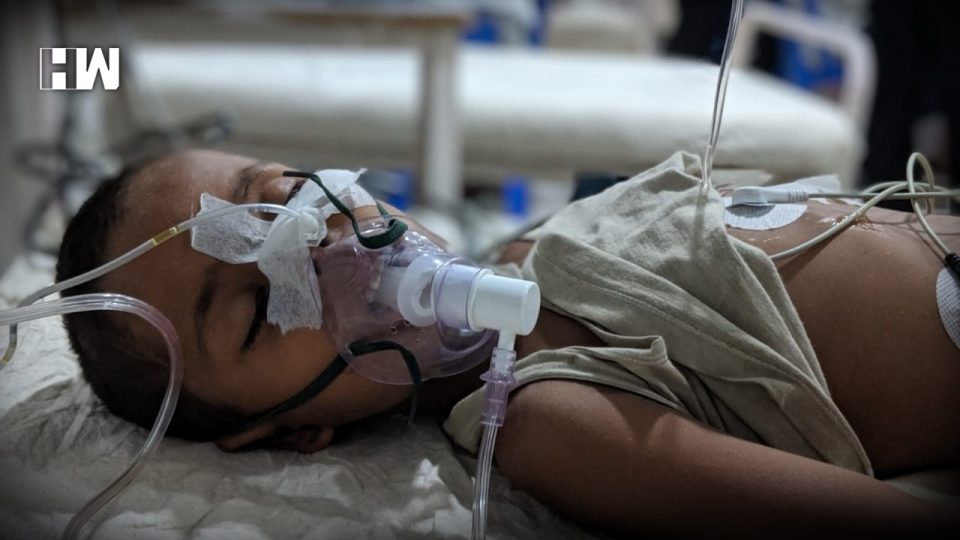As of Tuesday, 127 people have died in Bihar due to Acute Encephalitis Syndrome, or what is locally known as the Chamki Bukhar. Whereas, more than 50 have died to the intense heat wave in the state.
Bihar is knee deep in a health crisis. But why is it the only state that is suffering from such major health crisis right now?
From ground level workers to the Chief Minister Nitish Kumar, though claiming to control the situation, seem helpless.
One such recent example of how negligent the Bihar government can be, happened today. At an Encephalitis meeting which was conducted to curb the situation (only after 127 victims, but we’re ready to give them a benefit of doubt), Bihar’s Health minister Mangal Pandey asked his colleague “What’s the score?” in reference to the ongoing World Cup, in middle of a huge crux in the state.
Bihar’s health index has remained low over the years:
Bihar is flaunting a place in Bottom Five of India’s Health Index of 2018, only before Uttar Pradesh and Rajasthan. To understand how grave it is, Kerala who has topped the list has received a score of 76.55 out of 100, Bihar has received only 38.46 (as per the NITI AAYOG report using benchmark data of 2014-2015 and compared it to 2015-2016).

It is not surprising.
Bihar was facing constant criticism for its infant mortality rate, inadequate health and medical infrastructure, substandard medical fraternity, malnutrition of children, and so on.
Except for infant and maternal mortality rate, the rest has not improved.
Bihar’s Medical infrastructure is not enough for the population:
Over 50% of medical posts in hospitals are vacant. According to a survey, only 4,006 regular and contractual doctors work against a combined sanctioned strength of 8,575 while 2,391 Grade A nurses were employed against sanctioned 5,331 posts.
The major number of deaths in Bihar due to Encephalitis these couple of weeks have happened in Muzaffarpur, in Sri Krishna Medical College and Hospital (SKMCH) and Kejriwal Hospital. Since January 1, 358 children with AES have been admitted to SKMCH and Kejriwal Matrisadan.
If the diseases are happening all over the state, why do they end up dying only in these two places? One justification can be inferred: the rest of the hospitals in the state do not have the same facilities these ones do.
Various witness accounts have said that their children could have been saved, but by the time they managed to reach their destination, it was too late
The overpopulation of the diseased in the hospitals who do have the facilities has, in turn, decreased their efficiency.
A few days back, reports came out that the patients were being treated on the floor because there were no more beds available.
Sri Krishna hospital medical superintendent Sunil Kumar Shahi said, “We have an in-patient bed strength of only 610 whereas the number of patients admitted to our hospital is around 876. We do not refuse any patient, so we put mattresses to treat them on the floor.”

(Photo by Hindustan Times)
The Encephalitis situation could have been taken in a surprise element, but the government has seen it long coming. It has already happened before. According to the National Vector-Borne Diseases Control Programme (NVBDCP), 355 people died in 2014 due to AES. Every year, hundreds of patients from Bihar are admitted to the BRD Medical College in Uttar Pradesh’s Gorakhpur.
One of the root causes of this deadly disease is another health issue in Bihar: Malnutrition.
In Bihar, more than 50% of children are suffering from malnutrition. About 4% of the children are being classified under Severe Acute Malnutrition (SAM).
NRCs or Nutritional Rehabilitation Centres were set up in the state with the help of UNICEF during the UPA government to attend to the more urgent needs of severely malnourished children such as proper feeding and prompt medical treatment in. However, these NRCs again, fall short in quantity. Around 27 lakh children suffer from malnutrition out of which only 90,000 can be treated in these centres.

Also, Accredited Social Health Activists (ASHA) workers were directed to undertake a survey of villages in order to identify such patients. They would provide ORS to the affected families and ensure that no child in the village slept on an empty stomach. But reports came out that it was merely an annual occurrence and the government did not bother in ensuring if the measures continued.
Whereas, more than 100 have died all over the state due to the heatwave, which has taken an alarming proportion in the past four days.
The majority of deaths have happened in Gaya district of the state, where Section 144 has been invoked due to the increasing temperatures. Pratyay Amrit, Principal secretary of disaster management department, has said that the heatstroke deaths have been declared as a local disaster by the state government in 2015.
This decision was made four years ago, but people dying succumbing to it have not reduced. The maximum temperature in central Bihar region, including Patna, has been hovering between 42-46°C for the past three days. Monsoon rains have been delayed and the capital city may witness its onset after June 20.
The government has announced an ex-gratia of ₹4 lakhs, but hardly any relief measures are taken to rather prevent it. Official announcements have been made to advise people from leaving their homes unless absolutely necessary. Four doctors from Patna have been sent to ANMMCH; while primary health centres (PHCs) have been told to keep aside 50 per cent of their beds for sunstroke victims.
But the numbers are only ever increasing.
As an independent media platform, we do not take advertisements from governments and corporate houses. It is you, our readers, who have supported us on our journey to do honest and unbiased journalism. Please contribute, so that we can continue to do the same in future.

